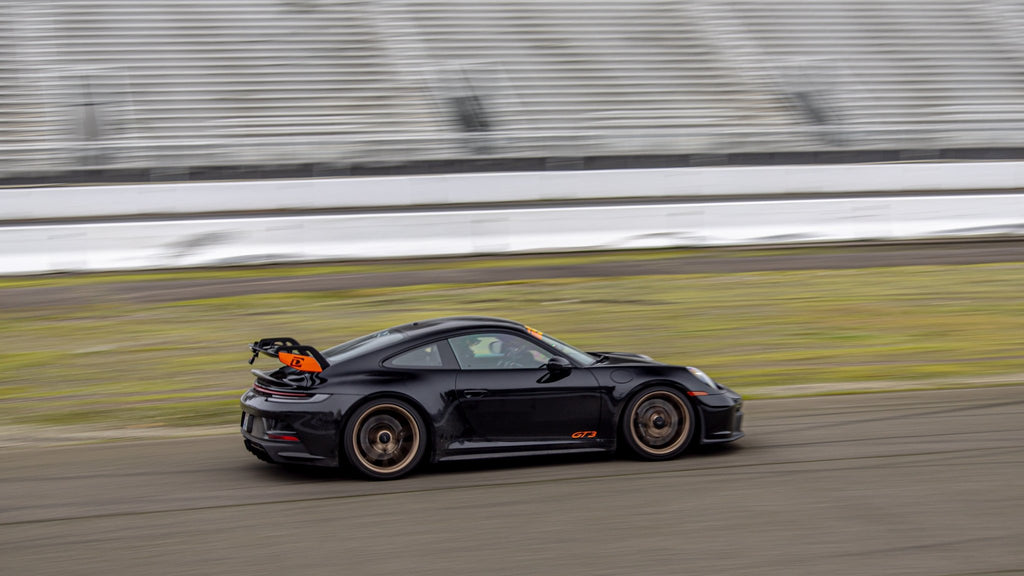
992 GT3 Development: Chapter One
We are finally getting around to sharing our development progress on the 992 GT3. We received the car in late October after a number of delays (like many of you, I’m sure!). Job number one was to get the engine broken in, which we managed to sneak in before the weather got too nasty.
Then she was subjected to the shop crew and torn into pieces. The crew documented, analyzed, and scanned the whole car, top to bottom.



Our whole goal is to take Porsche’s excellence and find meaningful ways to improve it. Porsche operates with certain constraints that may not apply to us (things like sound restrictions, governmental regulations, and the biggest one, accountants!).
We will cover the whole development process here, so I’ll jump in to share bits as we progress.
For starters, we began with our bread and butter: the exhaust. Once it was announced that the 992 GT3 would have a 4.0L flat-6 , we were excited, because we’ve been building a proper exhaust system for that engine for the last 5 years. The 9A1 GT3 engines (991 GT3/RS/Speedster) and 9A2 GT3 (992 GT3) engines are far more similar than they are different.
The 4.0L DGG/A/B is very much a known quantity, so I wanted to share some data from all the generations of GT3 that share this common engine. There are subtle changes in each specific model, but the performance between them is very similar. I share these mostly to provide context, so try not to get lost in the weeds.
991.2 GT3 Stock Dyno:

991.2 GT3RS Stock Dyno (main difference: intake track and ECU tuning from Porsche)

991.2 Speedster (OPF) Stock Dyno:

Finally, the 992 GT3 Stock Dyno:

As you can see, there’s a window of performance and the 992 GT3 is no exception. The real question is… where’s the ceiling?
We had confidence that we could apply a similar formula seen in the Speedster platform to the 992, the only question was packaging. From a manufacturing standpoint, it would’ve been fantastic if our current 991 systems bolted right up. Of course, Porsche changed things just enough to require a redesign of the headers to fit the body of the 992. Oh well, an opportunity to improve our current design and challenge our engineers.
The first set of headers were designed to minimize pressure drop, minimize turbulence and be easy to manufacture (seen below with cats, valve sections and our existing 321SS Loud Muffler).

The second design took several iterations to fit all the design criteria (performance, clearance to body & tire, and overall packaging in the chassis) and are much more challenging to manufacture. These are much more in line with what we've produced historically.

First set Dyno:

A subtle improvement, but you can see there wasn't a lot to be found staying within stock dimensions.
Second set dyno:


It's pretty clear that making the extra effort to design a cohesive system gets awesome results. It also seems that the 992's ECU is rather accommodating with regard to producing power (more on that in our next installment). To date we've finalized the CAD for our production headers and raw materials are on the way. We expect to start shipping these beauties in March and can't way to get them in happy owner's hands!
Here's a photo comparing the two flavors:

Keep in mind, these were both hand-built prototypes and were created to test the two theories. The final production tuned-length pieces should perform a little better than the prototypes, so dyno results could be even better than what we’ve shared here.
Numbers are great and all, but I know you all want to know how this thing sounds. We took a field trip to Pacific Raceways to put the longer set to the test. Turn up the volume and enjoy!
More fun images and sounds: our fastest lap of the day:
Stay tuned for photos of our production systems, and more development on this potent track weapon!
